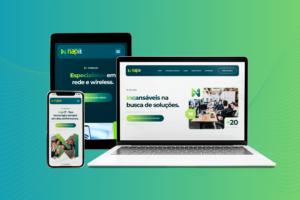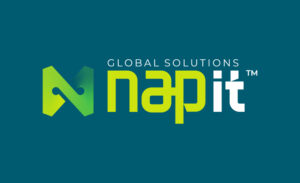Hugo Bortolato da Palma, partner development manager, presents to the Nap IT Blog his view about the current scenario, trends and other sector aspects
Companies of all sizes have used the technology to hold meetings at a distance, thus avoiding travel and executive expenses. Meeting this demand and ensuring high quality, technology providers are increasingly enhancing the capabilities integrated with these technology options with voice, video and data solutions.
In an interview for Nap IT Blog, Hugo Bortolato da Palma, partner development manager for the Cisco collaboration division, a global technology provider solutions, presented some aspects, trends and the segment expectations. It addresses innovations and account that provides for the technologies acquisition that will ensure even more interactivity and efficiency to users.
Read it in full:
Nap IT – How do you see the videocaboration market growth and what trends are coming to Brazil?
Hugo Palma – Within the various collaboration technologies, both video and web conferencing systems are the ones that have shown the most growth in Brazil, at a approximately rate of 7%, compared to 2014.
The most evident trend in the Brazilian market is these technologies adoption as a service because it makes it more interesting for companies to pay a monthly amount to the service provider. In this model, they have the video terminal, the infrastructure needed for the environment and all the support.
Nap IT – What’s new in Cisco for these technologies?
Hugo Palma – We can highlight the entire Cisco portfolio renewal and evolution. One of the highlights is the IX5000 immersive room, with three ultra-HD 70-inch screens whose cameras have 4K resolution. These technologies take the user to another immersive experience level, using half the predecessor equipment bandwidth.
Another new is the videocolaboration native integration room systems with the Cisco Web Conferencing (Webex), a solution that enables remote users to participate through any mobile device – computer, tablet or smartphone.
Nap IT – Many companies use free conference systems. What is the main difference between free and professional solutions?
Hugo Palma – The biggest difference is security. Free consumer applications do not have all protection layers, such as information authentication and encryption. It leads companies to attacks risk of or confidential information leaks, the consequences which can be disastrous.
Another important point is that free systems are not part of a complete collaboration architecture, which creates different environments and communication needs within companies. With it, to communicate with video, it needs an application; for corporate telephony, another distinct system; and so on.
In a complete collaborative architecture, the user has a fully integrated and consistent experience regardless of the communication type he will perform, the device (s)he prefers to use, and where (s)he is. The user is the collaboration center, it is (s)he who decides what to use at a certain moment, not the other way around.
Nap IT – What are the main features offered by the professional technologies that make companies justify investments in physical infrastructure, hardware and software?
Hugo Palma – Again we will talk about security as one of the main professional systems features because it prevents attacks and fraud in communication and the confidential information leak. Security is native to Cisco collaboration systems, and can be supplemented with other security components such as Firewalls and user identification systems. Integration with enterprise directory systems allows for “Single Sign-On” (mechanism for accessing multiple services from a single authentication) and the user profiles management.
Another feature is the consistent user experience regardless of device, so that it can perform your communication whether it is video, telephony or text messages, from anywhere and anytime.
Nap IT – At the end of 2015, Cisco announced that it will complete the purchase of Acano Limited, a provider of infrastructure and video-processing software. What are the objectives of this acquisition?
Hugo Palma – Acano’s solution will help Cisco accelerate the strategy of enhancing the user experience by communicating through any device and from anywhere, enhancing third-party interoperability (including proprietary Microsoft protocols and mobility browsers via Web-RTC). With this, it aims to massify the video due to its high scale capacity, adhering even more the tendency of the offer as a service, whether in the cloud or in a hybrid way.
Nap IT – What business opportunities can videocolaboration offer corporations?
Hugo Palma – Videocolaboration allows the business areas of companies to achieve their goals in a more agile, efficient and productive way, as communication becomes more effective and reduces human latency in corporate processes. In addition to reducing operating costs, increasing the teams productivity and consequently improving results for companies, it increases its customers satisfaction.
We can mention some use cases:
- Communication infrastructure consolidation: 61% of companies reported productivity increase as a consolidating result of unified communication and collaboration technologies, as well as improving management and reducing OPEX;
- Enable remote worker meetings: 87% of remote users feel more connected to their teams and processes when using videoconferencing; 58% of videoconferencing users report that it helps them accelerate decision making; while 95% of employers say that telecommuting has a major impact on employee retention.
- Locate and access remote experts: The customer interaction conversion rate with a subject specialist with audio and video is greater than 90%; only audio is 50%.
Nap IT – How do videocolaboration technologies suit mobile communication systems?
Hugo Palma – Cisco’s principle is to allow the user to have the same mobile experience as the one he has on his desk in the office. Apps running on smartphones and tablets have the same “look & fell” as desktop applications. Intuitive enough, users can participate in video and/or web conferencing, communicate with text messages, make a video-rich phone call, both internally in the corporation and between companies, regardless of the device and the operating system manufacturer.
Nap IT – Are videocolaboration technologies suitable for any size companies? Explain the technology suitability in relation to the user company size.
Hugo Palma – Yes, Cisco has videocolaboration solutions for any size company. Both to make your meeting rooms in collaborative rooms by enabling videocolaboration, as well as allowing all users to communicate natively with video, desk phones, desktop applications and mobile devices.
The need for videocolaboration is no longer a large corporations demand, the conjuncture and the market demand agility and companies response time (even small or medium size). These demands, only the videocolaboration next to the mobility are able to attend.
Nap IT – What are companies trying to solve with this technology?
Hugo Palma – The companies that want to hire this solution type are those that want to give the best service to their clients in a faster way, and want to provide employees with the best tools so they can perform their jobs, thus increasing their satisfaction and their retention in the company, in addition to attracting new and better talent. In short, they believe that technology is a standing out key part from their competitors and improving their customers and employees satisfaction.
For more information on Cisco collaboration systems, visit: http://www.cisco.com/web/BR/solucoes/collaboration/index.html
Also read the article:
Videoconference: Quality technology reduces travel costs






